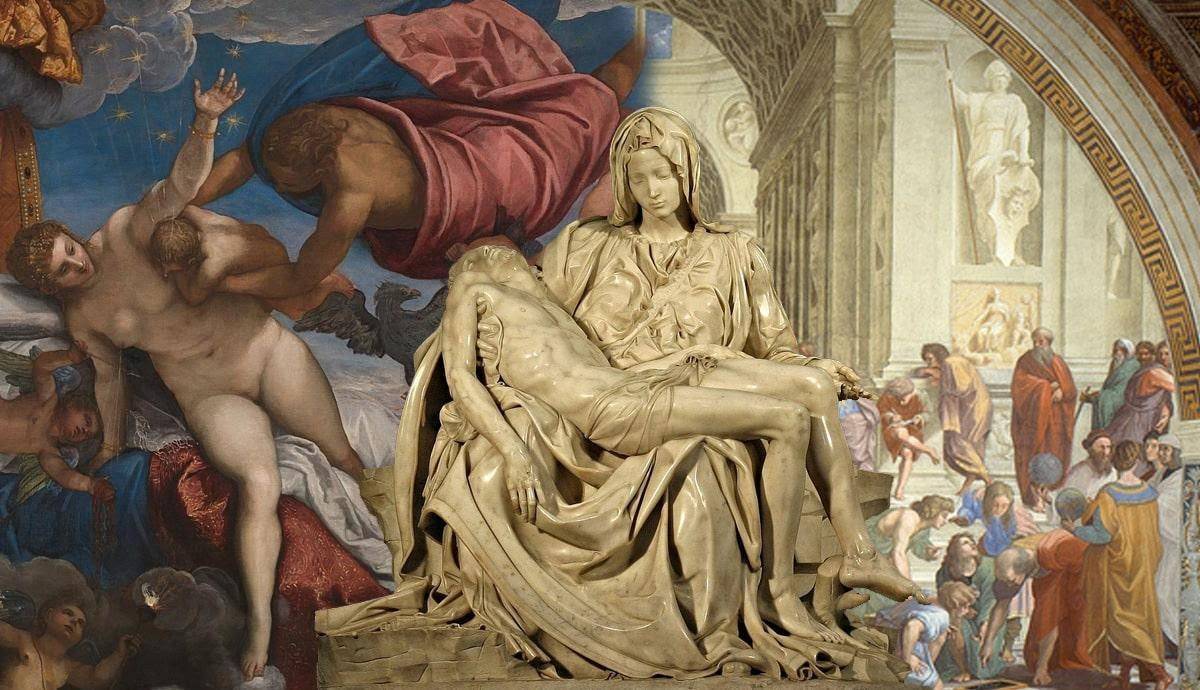This content explores the influence of 10 Renaissance artists on modern art. It highlights the contributions of Leonardo da Vinci, Michelangelo, Raphael, Botticelli, Titian, Caravaggio, Donatello, Vermeer, Giotto, and El Greco. Each artist’s unique style, techniques, and subject matter are discussed, as well as the ways in which they influenced subsequent generations of artists. The content emphasizes how these Renaissance artists have shaped the course of art history and continue to inspire contemporary artists today.
Exploring the Influence of 10 Renaissance Artists on Modern Art
1. Leonardo da Vinci
Leonardo da Vinci is widely regarded as the quintessential Renaissance artist. His multifaceted talents and insatiable curiosity extended beyond the realm of art, encompassing science, engineering, and anatomy. As a painter, da Vinci’s technique was unparalleled, and his works such as the Mona Lisa and The Last Supper continue to captivate audiences to this day. His meticulous attention to detail, mastery of light and shadow, and naturalistic portrayal of his subjects have had a profound influence on modern art.
2. Michelangelo
Michelangelo Buonarroti was renowned for his monumental marble sculptures, most notably his masterpiece, the David. His sculptures emphasized the human form, revealing an exquisite understanding of anatomy and proportions. This attention to anatomical accuracy, along with his dynamic compositions and emotional intensity, greatly impacted subsequent generations of artists. Michelangelo’s influence can be seen in the sculptural works of Henry Moore and Auguste Rodin, who both drew inspiration from his mastery of form.
3. Raphael
Raphael’s works epitomize the harmony, balance, and idealized beauty characteristic of the Renaissance period. His frescoes, such as those found in the Vatican’s Sistine Chapel, showcase his exceptional talent for capturing ethereal grace and serene expressions. Raphael’s emphasis on symmetry and his ability to convey complex narratives through composition continue to inspire contemporary artists, including Mark Tansey and Cindy Sherman.
4. Botticelli
Sandro Botticelli’s art is synonymous with grace, elegance, and a celebration of human beauty. His ethereal paintings, such as Primavera and The Birth of Venus, are characterized by their delicate figures, flowing drapery, and mythological subject matter. Botticelli’s exploration of movement and his use of vibrant colors had a lasting impact on artists such as Andy Warhol and Salvador Dalí, who often incorporated fantastical and dreamlike elements into their works.
5. Titian
Titian’s mastery of color and brushwork made him one of the most influential painters of the Renaissance. His use of vibrant, rich hues and his groundbreaking technique of layering glazes resulted in a luminous quality in his paintings. Artists such as J.M.W. Turner and Edgar Degas were inspired by Titian’s bold approach to color and light, which they incorporated into their own works to create atmospheric and evocative scenes.
6. Caravaggio
Caravaggio’s dramatic use of chiaroscuro, or the contrast between light and dark, revolutionized painting in the early 17th century and left an indelible mark on art history. His paintings, such as The Calling of Saint Matthew and The Supper at Emmaus, often featured intensely lit figures emerging from dark backgrounds, creating a sense of theatricality and immediacy. Caravaggio’s innovative approach to lighting and his raw, emotional depictions of his subjects influenced artists like Rembrandt and Georges de La Tour, who adopted similar techniques to convey depth and drama.
7. Donatello
Donatello was a pioneer of Renaissance sculpture and played a pivotal role in the development of naturalistic human representation. His bronze statue of David is a prime example of his ability to capture movement and expressiveness. Donatello’s attention to detail and his exploration of psychological depth in his sculptures have resonated with subsequent artists, including Auguste Rodin and Alberto Giacometti, who also sought to convey the inner life of their subjects through their works.
8. Vermeer
Johannes Vermeer’s intimate and meticulously crafted paintings, such as Girl with a Pearl Earring and The Milkmaid, are renowned for their luminosity and realistic detail. Vermeer’s use of light and his ability to capture everyday domestic scenes with a sense of tranquility and serenity have influenced many artists, including Édouard Manet and Henri Fantin-Latour. These artists adopted Vermeer’s careful observation of light and their focus on the ordinary aspects of life, fostering the development of realism in modern art.
9. Giotto
Giotto di Bondone is often referred to as the father of Western painting due to his significant contributions to the transition from the Medieval period to the Renaissance. His frescoes, such as those in the Scrovegni Chapel in Padua, exhibited a newfound naturalism and three-dimensionality. Giotto’s exploration of space and volume influenced later artists such as Masaccio and Piero della Francesca, as they expanded upon his techniques, developing perspective and spatial depth in their own works.
10. El Greco
El Greco, born Doménikos Theotokópoulos, was a highly distinctive and influential artist known for his elongated figures, vibrant colors, and spiritual intensity. His unconventional style, characterized by elongated necks, expressive gestures, and vivid brushwork, anticipated the expressive qualities of later art movements such as Expressionism and Symbolism. Artists including Paul Cézanne and Wassily Kandinsky admired El Greco’s spiritual fervor and incorporated similar emotional intensity and nonnaturalistic color into their works.
In conclusion, the influence of Renaissance artists on modern art is immeasurable. From the unrivaled skill of Leonardo da Vinci and Michelangelo to the harmonious compositions of Raphael and Botticelli, their contributions have shaped the course of art history. These ten artists represent a mere fraction of the myriad of Renaissance talents whose impact continues to reverberate through the art world today.
